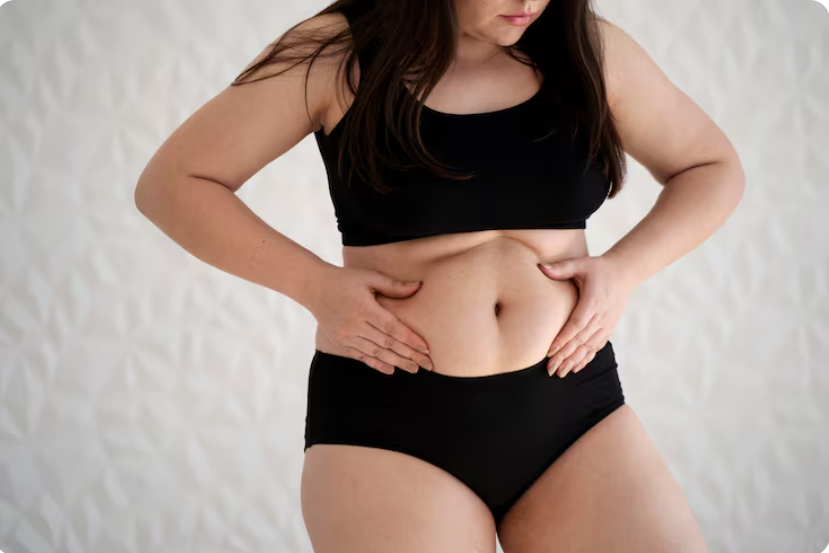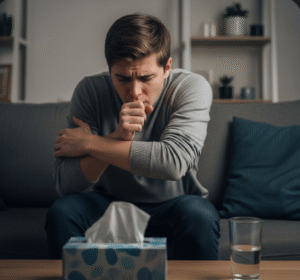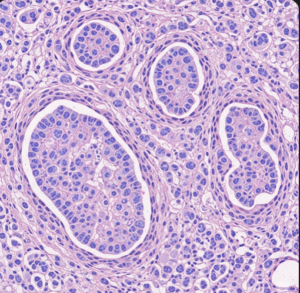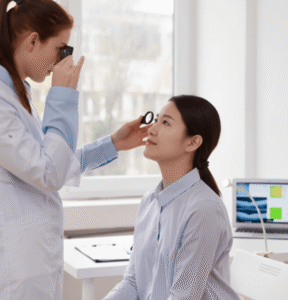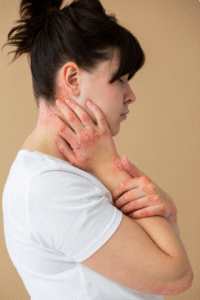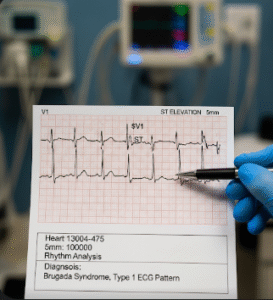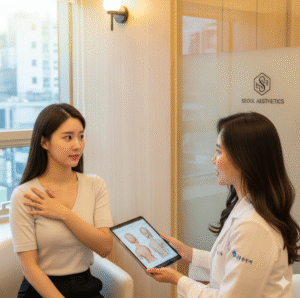What It Is
Love handles liposuction is a cosmetic surgical procedure that removes excess fat from the sides of the waist and lower back. These fat deposits are commonly called “love handles” and are often resistant to diet and exercise. By precisely targeting and removing these fat cells, the procedure helps create a slimmer waistline, better body proportions, and a more contoured silhouette.
In Korea, love handles liposuction is widely performed in accredited hospitals and specialized plastic surgery clinics that emphasize advanced techniques, safety, and natural-looking results.
Why It’s Done
Patients typically choose love handles liposuction for aesthetic reasons, including:
- Reducing bulging fat around the waist that is difficult to lose through lifestyle changes.
- Achieving a more defined waist and smoother body contour.
- Enhancing self-confidence and satisfaction with personal appearance.
- Improving how clothing fits and looks.
This treatment is not a substitute for weight loss but rather a targeted body-contouring solution.
Alternatives
Some patients may consider other options before committing to surgical liposuction:
- Non-surgical fat reduction: Procedures like cryolipolysis (fat freezing), high-intensity ultrasound, or laser lipolysis.
- Lifestyle changes: Weight loss through diet and exercise can reduce overall body fat, though it may not target love handles specifically.
- Injectable treatments: Fat-dissolving injections can address small localized fat pockets but are less effective for larger areas.
These methods are less invasive but also tend to provide subtler results compared to liposuction.
Preparation
Preparation is essential to ensure safety and optimal outcomes. Typical steps include:
- Consultation: Meeting with a plastic surgeon to discuss goals, expectations, and health status.
- Medical tests: Blood tests and health screenings to confirm fitness for surgery.
- Lifestyle adjustments: Patients are usually advised to stop smoking and avoid alcohol before surgery.
- Medication review: Temporary discontinuation of certain drugs (e.g., blood thinners) to reduce risks.
- Planning ahead: Arranging transportation and light support at home during the first recovery days.
How It’s Done
The procedure can be performed under local anesthesia with sedation or under general anesthesia, depending on the patient’s needs. Typical steps include:
- Marking: The surgeon outlines the areas of fat to be removed.
- Anesthesia: Local or general anesthesia ensures comfort.
- Small incisions: Tiny, hidden cuts are made near the treatment area.
- Tumescent fluid: A solution of saline, anesthetic, and medication is injected to minimize bleeding and loosen fat.
- Fat removal: A thin cannula attached to suction equipment removes fat deposits in a controlled manner.
- Closure: Small sutures or surgical tape close the incisions.
The procedure usually takes 1–2 hours, depending on the volume of fat removed.
Recovery
Recovery after love handles liposuction is generally smooth, with patients able to return to daily activities relatively quickly.
- First days: Swelling, bruising, and mild soreness are common. Compression garments help reduce swelling and support healing.
- Activity level: Light walking is encouraged within a day, but strenuous activities should be avoided for 3–4 weeks.
- Follow-ups: Scheduled visits ensure proper healing and progress monitoring.
- Results: Initial contour improvement is visible within weeks, with final results appearing after swelling subsides—typically 3–6 months.
Possible Complications
While generally safe, all surgical procedures carry risks. Possible complications include:
- Infection or bleeding at the incision sites.
- Irregular contours or asymmetry.
- Fluid buildup under the skin (seroma).
- Numbness or temporary skin sensitivity changes.
- Small scars, usually well-hidden.
- Rare complications, such as blood clots or anesthesia-related issues.
Choosing an experienced surgeon significantly reduces these risks.
Treatment Options in Korea
International patients traveling to Korea for love handles liposuction benefit from a comprehensive care process.
Diagnosis
- Detailed consultation with a board-certified surgeon.
- Body analysis and sometimes 3D imaging to plan precise fat removal.
Medical Treatments
- Pain management and preventive antibiotics prescribed before and after surgery.
- Specialized compression garments tailored to support recovery.
Surgical or Advanced Therapies
- Traditional liposuction: Manual removal of fat using precision cannulas.
- Laser-assisted liposuction: Uses laser energy to liquefy fat and stimulate skin tightening.
- Ultrasound-assisted liposuction: Breaks down fat with ultrasound technology for smoother results.
Rehabilitation and Support
- Post-surgery follow-up visits, including wound care and progress monitoring.
- Lymphatic drainage massages to reduce swelling and speed recovery.
- Dedicated international patient coordinators offering translation and logistical support.
- Virtual consultations available for overseas patients after returning home.

